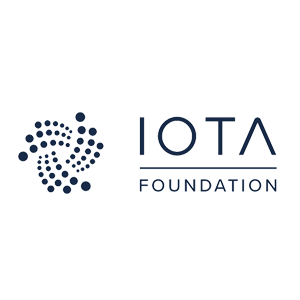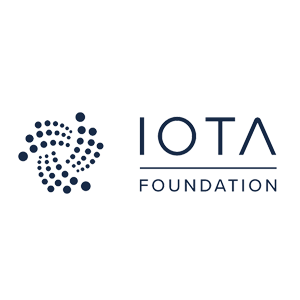Latest News
- $IOTA Flipping $0.17 would be a good start to turn this trend around.Has found good support at ~$0.13 and now making a higher low.Diagonal resistance is a bit messy but gives a good idea of the level that needs to be broken.
- IOTA East Africa Web3 Innovation Summit
- Q1 2025 Progress Report
- Is IOTA About to Suprise Us?
Current Price
The current price of IOTA is $0.16533
Introduction
IOTA presents a compelling case within the cryptocurrency ecosystem, primarily due to its groundbreaking Tangle technology that facilitates instantaneous, feeless transactions tailored for the Internet of Things (IoT).
By circumventing traditional blockchain limitations, IOTA positions itself as a significant player in sectors such as smart cities and supply chain management.
However, the question remains: how does IOTA’s unique approach stack up against established cryptocurrencies like Bitcoin and Ethereum, and what implications does this have for its future trajectory? Exploring these dimensions reveals critical insights into IOTA’s potential.

Quick Overview
- IOTA utilizes Tangle technology, enabling feeless microtransactions and enhanced scalability for IoT applications compared to traditional blockchain systems.
- The unique consensus mechanism eliminates miners, fostering a decentralized environment while ensuring transaction validation and security.
- IOTA supports diverse use cases, including smart cities, supply chain management, and energy trading, emphasizing machine-to-machine communication.
- Near-instant transaction confirmations and infinite scalability cater to the high volume, low-cost needs of connected devices in the IoT ecosystem.
- Future innovations may include smart contract integration and improved interoperability, enhancing IOTA’s functionality and market adoption prospects.
Overview of IOTA
IOTA stands at the forefront of the evolving landscape of cryptocurrency and distributed ledger technology, aiming to address the unique challenges posed by the Internet of Things (IoT). Unlike traditional blockchain architectures, IOTA employs a novel data structure called the Tangle, which allows for feeless transactions and scalability, essential for the vast number of devices connected in an IoT ecosystem.
Founded in 2015, IOTA’s primary objective is to facilitate machine-to-machine transactions, enabling secure exchanges of data and value among connected devices. The protocol supports a diverse range of applications, from supply chain management to smart cities, underscoring its versatility and potential impact on various industries.
IOTA distinguishes itself through its commitment to decentralization and security, with a focus on enabling a frictionless economy where devices can autonomously transact without human intervention.
The project has garnered attention from both industry leaders and academic institutions, further validating its relevance in the digital age. As IOTA continues to evolve, it represents both a technological innovation and a framework for a future where IoT devices operate seamlessly within a decentralized network.
The Tangle Technology
At the core of IOTA’s innovative approach lies the Tangle technology, a unique distributed ledger structure that diverges from traditional blockchain models. The Tangle operates on a directed acyclic graph (DAG), allowing transactions to be processed in parallel rather than sequentially. This architecture eliminates the need for miners, which are integral to conventional blockchains, thereby reducing operational costs and enhancing scalability.
In the Tangle, each new transaction must validate two previous transactions, creating a web of interlinked activity that increases security and decentralization. This mechanism not only enables faster transaction confirmations but also allows for zero-fee transactions, making it particularly suitable for microtransactions and the Internet of Things (IoT).
The Tangle’s design addresses several limitations inherent to traditional blockchain systems, particularly regarding scalability and speed. As the network grows, the throughput increases, which contrasts sharply with the scalability challenges faced by many established cryptocurrencies.
Key Features of IOTA
Building on the foundations laid by Tangle technology, IOTA offers several key features that distinguish it from traditional cryptocurrencies. One of the most notable characteristics is its feeless transaction model, which eliminates transaction fees entirely. This enables microtransactions, making IOTA particularly appealing for Internet of Things (IoT) applications, where small value exchanges are commonplace.
Another significant feature is its scalability. Unlike conventional blockchain systems, where increased transaction volume can lead to congestion and slower processing times, IOTA’s Tangle architecture allows for enhanced scalability. As more transactions occur, the network becomes more efficient, facilitating a higher throughput without compromising performance.
Additionally, IOTA employs a unique consensus mechanism that enhances security and decentralization. In the Tangle, each transaction must confirm two previous transactions, creating a self-sustaining network that minimizes reliance on centralized entities. This aspect not only bolsters security but also guarantees that IOTA can operate in a distributed manner.
Lastly, IOTA’s focus on interoperability with various devices and systems positions it as a versatile solution in the evolving landscape of digital transactions. Collectively, these features underline IOTA’s potential to revolutionize how data and value are exchanged in the digital economy.

IOTA and the IoT Landscape
The intersection of IOTA and the Internet of Things (IoT) represents a transformative opportunity for enhancing connectivity and automation in various sectors.
IOTA’s unique architecture, which is built on a directed acyclic graph (DAG) known as the Tangle, enables feeless transactions and scalability, making it particularly suitable for IoT applications. As the IoT landscape continues to evolve, IOTA positions itself as a pivotal player in facilitating machine-to-machine communication and data exchange.
Key advantages of IOTA in the IoT ecosystem include:
- Feeless Transactions: IOTA allows devices to transact without incurring fees, promoting seamless microtransactions.
- Scalability: The Tangle architecture enables the network to scale efficiently as more devices are added.
- Data Integrity: IOTA employs a secure method for data transmission, ensuring the integrity of information shared among devices.
- Decentralization: The lack of a traditional blockchain structure enhances security and resilience against attacks.
These attributes not only enhance operational efficiency but also enable new business models in industries such as automotive, healthcare, and smart cities, ultimately fostering a more interconnected and automated world.
Comparison With Other Cryptocurrencies
In examining IOTA alongside other cryptocurrencies, key differentiators such as scalability and transaction speed emerge as critical factors influencing their adoption.
Additionally, the distinct consensus mechanisms utilized by IOTA set it apart from traditional blockchain models, warranting a closer look at their respective efficiencies.
Moreover, the unique use cases and applications of IOTA, particularly in the Internet of Things (IoT) ecosystem, highlight its potential advantages over competitors in the cryptocurrency space.
Scalability and Transaction Speed
Scalability and transaction speed are critical factors that distinguish IOTA from other cryptocurrencies in the rapidly evolving digital landscape. Unlike traditional blockchain systems, IOTA utilizes a unique architecture called the Tangle, which enables it to achieve significant scalability and rapid transaction speeds without the limitations commonly faced by conventional networks.
Key advantages of IOTA’s scalability and transaction speed include:
- No Transaction Fees: IOTA transactions do not incur fees, facilitating microtransactions and increasing usability for Internet of Things (IoT) devices.
- Parallel Processing: Transactions in the Tangle can be processed simultaneously, allowing for enhanced throughput as the network grows.
- Infinite Scalability: As more users join the network, it becomes more efficient, reducing the time required for transaction confirmations.
- Instant Transactions: Users can experience near-instant confirmation times, a significant improvement over many legacy cryptocurrencies that face delays.
In comparison to major cryptocurrencies like Bitcoin and Ethereum, which exhibit scalability challenges and higher transaction times, IOTA’s innovative approach positions it favorably for applications requiring swift and cost-effective transactions, particularly in the IoT sector.
Consensus Mechanism Differences
Utilizing a distinct consensus mechanism, IOTA diverges markedly from traditional cryptocurrencies, which typically rely on proof-of-work or proof-of-stake systems. Instead, IOTA employs a unique approach known as the Tangle, a directed acyclic graph (DAG) structure. This design allows for transactions to be confirmed without the need for miners, thereby eliminating transaction fees and enabling feeless microtransactions.
In contrast to conventional systems, where miners validate blocks of transactions, each participant in IOTA’s network must validate two previous transactions to confirm their own. This method fosters a more decentralized and scalable environment, as it enhances throughput and minimizes bottlenecks associated with blockchains.
Additionally, IOTA’s consensus mechanism enhances security by making the network more resilient to attacks, as there is no single point of failure.
While proof-of-work systems require significant computational resources, and proof-of-stake systems depend on the ownership of tokens, IOTA’s Tangle prioritizes network participation and transaction validation. This innovative mechanism positions IOTA as a potential leader in the domain of Internet of Things (IoT) applications, although its long-term viability remains to be seen in comparison to more established consensus models.
Use Cases and Applications
Exploring the diverse use cases and applications of IOTA reveals its potential advantages over other cryptocurrencies, particularly in the domain of the Internet of Things (IoT). Unlike traditional blockchain platforms, IOTA employs a unique Tangle architecture that allows for feeless microtransactions and scalable data transfer. This innovation positions IOTA as a strong candidate for various IoT applications where high transaction volumes and low costs are paramount.
Key use cases of IOTA include:
- Smart Cities: Facilitating data exchange between connected devices to optimize urban infrastructure and services.
- Supply Chain Management: Enhancing traceability and transparency by securely recording every transaction and change of custody.
- Automotive Industry: Enabling vehicle-to-vehicle and vehicle-to-infrastructure communication for improved traffic management and safety.
- Energy Trading: Allowing peer-to-peer energy trading among consumers, promoting decentralized energy distribution.
In comparison to other cryptocurrencies, IOTA’s focus on machine-to-machine transactions and its innovative consensus mechanism provide significant advantages. This positions IOTA as a forward-thinking solution tailored for the needs of an increasingly interconnected world.
Future Prospects for IOTA
The future prospects for IOTA are shaped by several critical factors, including ongoing technological innovations that aim to enhance scalability and efficiency.
Additionally, market adoption trends will play a pivotal role in determining IOTA’s relevance in the evolving cryptocurrency landscape.
However, regulatory challenges may pose significant hurdles that could impact its growth trajectory.
Technological Innovations Ahead
As IOTA continues to evolve, its potential for technological innovations remains significant, particularly in the domain of decentralized applications and the Internet of Things (IoT).
By leveraging its unique Tangle architecture, IOTA is positioned to address several vital challenges within the IoT ecosystem, such as scalability, transaction fees, and security.
The following innovations could play an essential role in IOTA’s future development:
- Scalable Microtransactions: IOTA’s fee-less transactions enable the economical operation of machine-to-machine payments, facilitating a new paradigm for IoT applications.
- Data Integrity and Security: Utilizing cryptographic methods, IOTA can guarantee that data transmitted between devices is secure and tamper-proof.
- Smart Contract Integration: Future advancements may encompass smart contracts tailored to IoT devices, allowing for automated, trustless interactions among autonomous systems.
- Interoperability Solutions: Enhancements in cross-platform compatibility will enable IOTA to engage seamlessly with other blockchain technologies, broadening its applicability.
These technological innovations suggest that IOTA is not only poised to enhance the functionality of IoT but also to redefine how decentralized applications are developed and utilized across various sectors.
Market Adoption Trends
Market adoption of IOTA is increasingly influenced by its innovative technological framework, particularly within the rapidly expanding IoT landscape. As businesses and industries prioritize connectivity and automation, IOTA’s unique Tangle technology, which facilitates secure data transactions without the need for traditional mining, positions it favorably. This characteristic is especially beneficial for devices in IoT ecosystems, where microtransactions and real-time data sharing are essential.
Recent partnerships with major firms in sectors such as automotive, manufacturing, and smart cities demonstrate a growing recognition of IOTA’s potential. For instance, collaborations with companies like Jaguar Land Rover and Bosch highlight the platform’s ability to enhance operational efficiency and data integrity.
Additionally, IOTA’s commitment to open-source development fosters an inclusive environment that encourages innovation and community-driven solutions.
However, while the prospects for market adoption are promising, the extent of integration into mainstream applications will depend on continued technological advancements and the ability to address scalability challenges.
As organizations increasingly seek decentralized solutions, IOTA’s alignment with these trends may enhance its market presence, solidifying its role as a key player in the future of IoT and blockchain technologies.
Regulatory Challenges Impacting Growth
How might evolving regulatory frameworks shape the future of IOTA in the competitive blockchain landscape? As governments and regulatory bodies around the world grapple with the implications of blockchain technology, IOTA faces unique challenges that could either hinder or facilitate its growth.
The regulatory environment is critical for fostering innovation while ensuring consumer protection, consequently influencing IOTA’s adoption across various sectors.
Several key regulatory challenges are pertinent:
- Compliance with Data Privacy Laws: IOTA must navigate stringent regulations like GDPR, ensuring that its technology aligns with data protection standards.
- Cryptocurrency Classification: The ambiguity surrounding the classification of IOTA as a security or utility token can impact its marketability and investment appeal.
- Cross-Border Regulations: Variability in regulations across jurisdictions can create barriers for IOTA’s global expansion and partnerships.
- Integration with Existing Regulatory Frameworks: IOTA needs to demonstrate its compatibility with traditional financial systems to gain institutional trust and support.
Frequently Asked Questions
What Is the Current Market Price of IOTA?
The current market price of IOTA fluctuates based on various factors including market demand, investor sentiment, and broader cryptocurrency trends. For accurate and real-time pricing, refer to reliable financial news platforms or cryptocurrency exchanges.
How Can I Buy IOTA Tokens?
To purchase IOTA tokens, investors can utilize cryptocurrency exchanges such as Binance or Kraken. Registration, verification, and fund deposits are prerequisites, followed by selecting the desired trading pair to execute the transaction effectively.
Is IOTA a Good Investment?
Evaluating any investment requires careful consideration of market trends, technology adoption, and potential risks. IOTA’s unique technology may offer growth potential, but investors should conduct thorough research and consider volatility before making decisions.
What Wallets Support IOTA Storage?
Several wallets support IOTA storage, including the official Trinity wallet, Firefly wallet, and hardware options like Ledger Nano S and X. These wallets guarantee secure transactions and provide user-friendly interfaces for managing digital assets effectively.
How Can I Participate in the IOTA Community?
To participate in the IOTA community, engage through official forums, social media channels, and community events. Contributing to discussions, collaborating on projects, and attending meetups can enhance your involvement and understanding of the ecosystem.
Wrapping Up
To sum up, IOTA’s innovative Tangle technology positions it as a significant player in the cryptocurrency market, particularly within the Internet of Things sector.
The elimination of transaction fees and the absence of miners enhance scalability and efficiency, making IOTA an attractive option for various applications.
Its ability to address challenges faced by traditional blockchains, alongside its focus on security and decentralization, suggests a promising future as the digital economy continues to evolve.
